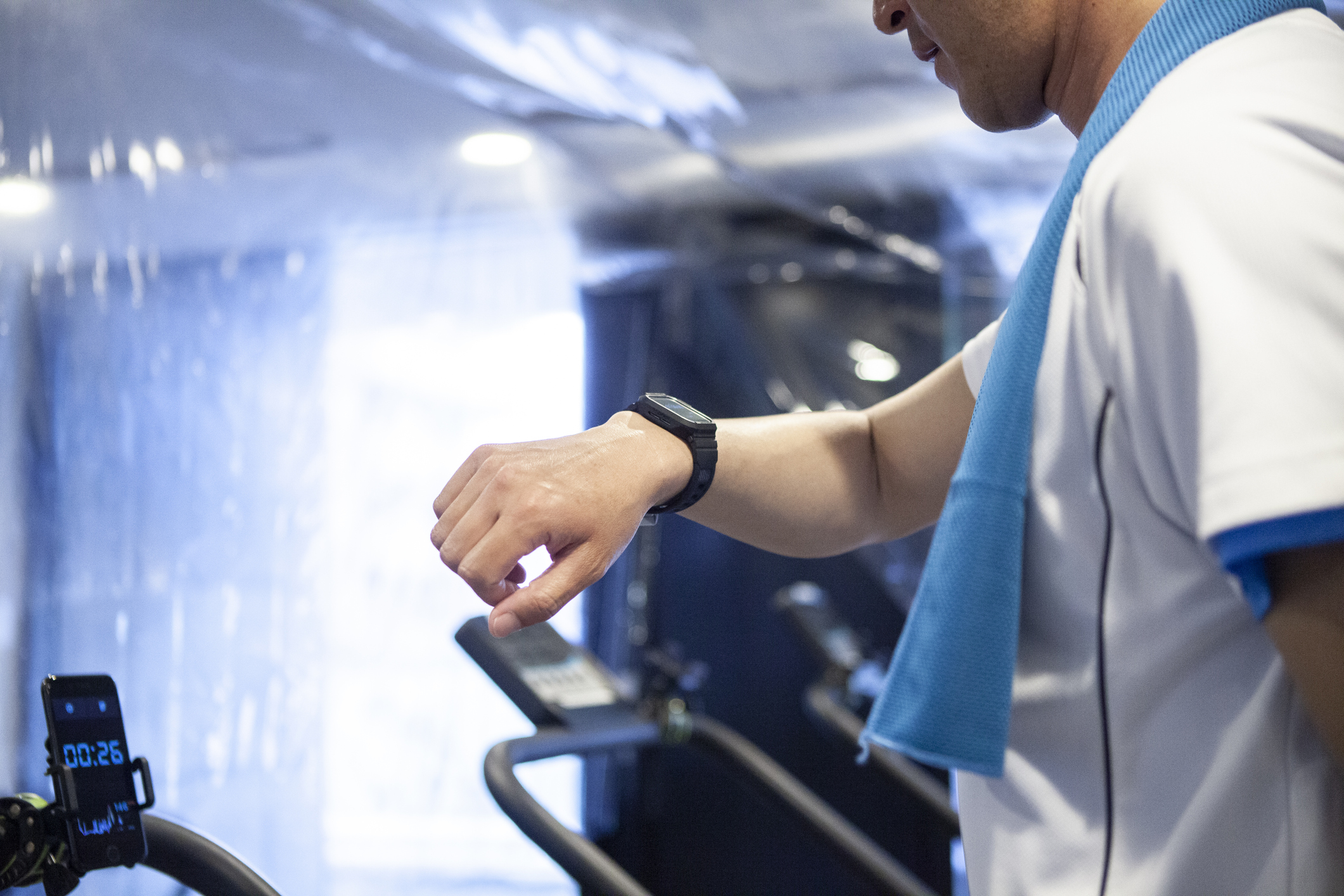Get Easy Health Digest™ in your inbox and don’t miss a thing when you subscribe today. Plus, get the free bonus report, Mother Nature’s Tips, Tricks and Remedies for Cholesterol, Blood Pressure & Blood Sugar as my way of saying welcome to the community!
How your smartwatch or fitness tracker can make you sick

Over the past few years, I’ve found that frequently washing my hands and disinfecting surfaces around my home seems to have cut down on the number of colds or bugs I get.
It’s a habit I started during the pandemic — and it just stuck. That’s a good thing…
Because it seems the pandemic also spurred on some new habits for scientists too — like diving into research that shows us the sheer amount of germs or bacteria we’re exposed to in our day-to-day activities, where to find them in high concentrations and how long they thrive on all kinds of surfaces.
Remember what they told us about toilet plumes? I know I’ll never flush with the lid up again.
Plus, we’ve learned certain items can gather and retain these germs, like your pillowcase or cell phone. For instance, cellphones tend to be particularly dirty, containing 10 times more bacteria than most toilet seats!
Well, there’s a new item to add to the list of things to sanitize to keep infections at bay…
Wristbands are crawling with germs
More and more of us are using wristband devices like smartwatches and fitness trackers. We wear these devices every day, yet few of us ever think about cleaning them.
A group of researchers from Florida Atlantic University recently decided to test wristbands worn by active individuals for potentially harmful pathogens. They examined wristbands made of plastic, rubber, cloth, leather and metal to see if there is a link between type of material and prevalence of bacteria.
After looking at bacterial counts, type of bacteria and distribution on the wristband surface, the researchers found that 95 percent of the wristbands were contaminated.
However, metal wristbands — especially gold and silver — had little to no bacteria, while rubber and plastic wristbands had higher bacterial counts. The most significant predictors of bacteria load were the texture of the wristband material and the hygiene of the subject wearing it at sampling time.
“Plastic and rubber wristbands may provide a more appropriate environment for bacterial growth as porous and static surfaces tend to attract and be colonized by bacteria,” says Dr. Nwadiuto Esiobu, senior author and a Florida Atlantic University professor.
On average, the trend of bacterial load from greatest to least was cloth, plastic, rubber, leather and metal.
As for specific bacteria, the researchers discovered multiple species of Staphylococcus on 85 percent of the wristbands and E. coli on 60 percent. They also found multiple species of Pseudomonas on 30 percent of the wristbands.
Staphylococcus can cause a wide variety of diseases including skin infections, endocarditis, bone infections and pneumonia. Pseudomonas can cause infections in the blood, lungs (pneumonia) or other parts of the body after surgery. E. coli usually infects people through fecal-oral transmission and in some cases can cause severe stomach pain, bloody diarrhea and kidney failure.
Those who had gone to the gym showed the highest staphylococcal counts.
The researchers say the results show how necessary it is to regularly sanitize these wristbands.
“Even at relatively low numbers these pathogens are of public health significance,” Esiobu says. “Importantly, the ability of many of these bacteria to significantly affect the health of immunocompromised hosts indicates a special need for healthcare workers and others in hospital environments to regularly sanitize these surfaces.”
The best disinfectants for your wristband
In addition to detecting bacteria, the researchers identified the best protocols to properly disinfect the wristbands. They screened the effectiveness of three different disinfectants: Lysol™ Disinfectant Spray; 70 percent ethanol, which is commonly used in hospitals and alcohol wipes; and apple cider vinegar, a natural disinfectant.
The results show both Lysol™ Disinfectant Spray and 70 percent ethanol had a 99.99 percent kill rate within 30 seconds of application, regardless of the wristband material. Apple cider vinegar, by contrast, required a full 2-minute exposure to reduce bacterial counts and wasn’t as potent at doing so as the other two disinfectants.
For all the disinfectants, antibacterial effectiveness was increased significantly at 2 minutes after application versus 30 seconds.
Esiobu says other potential forms of bacterial transmission such as earbuds or cellphones should be similarly studied.
Just be sure to clean your electronic items carefully to avoid damaging their components, and give it a few hours before you wear them, in case your skin is sensitive to disinfectant. If you have a known sensitivity, you might opt for the apple cider vinegar method.
Editor’s note: There are perfectly safe and natural ways to decrease your risk of blood clots including the 25-cent vitamin, the nutrient that acts as a natural blood thinner and the powerful herb that helps clear plaque. To discover these and other secrets of long-lived hearts, click here for Hushed Up Natural Heart Cures and Common Misconceptions of Popular Heart Treatments!
Sources:
1. Common wristbands ‘hotbed’ for harmful bacteria including E. coli, staphylococcus — EurekAlert!
2. Prevalence and Disinfection of Bacteria Associated with Various Types of Wristbands — Scientific Research
3. Surface Cleaning and COVID-19: What You Should Know — WebMD
4. Escherichia coli (E. coli) O157 — NHS inform
5. Staphylococcal Infections — MedlinePlus
6. Your Cell Phone Is 10 Times Dirtier Than a Toilet Seat. Here’s What to Do About It — Time















